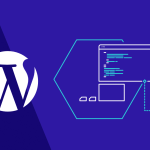Table of Contents

In cPanel, resource usage refers to the consumption of server resources by your website or hosting account. This can include CPU usage, memory (RAM) usage, disk space, and bandwidth. Monitoring and managing these resources is crucial for maintaining the performance and stability of your website. Here’s a brief overview of how you can check and manage resource usage in cPanel:
1. Resource Usage Overview
- CPU Usage: Indicates the amount of CPU power your website or hosting account is consuming. Excessive CPU usage can slow down your website and affect server performance.
- Memory (RAM) Usage: Shows the amount of RAM your website or account is using. High memory usage can lead to slower performance and, in extreme cases, crashes.
- Disk Space Usage: Reflects how much disk space your files, databases, and emails are using. Running out of disk space can prevent you from uploading new files or receiving emails.
- Bandwidth Usage: Measures the amount of data transferred to and from your website. High bandwidth usage can result in additional charges or throttling.
2. Checking Resources Usage
- cPanel Dashboard: Log in to cPanel, and you may find an overview of your resource usage on the main dashboard or in a section like “Resource Usage” or “Metrics.”
- Resource Usage Page: Navigate to the “Metrics” section and select “Resource Usage” (if available). This page provides detailed information on how your account is utilizing resources.
- CPU and Concurrent Connection Usage: Some cPanel installations include a section specifically for tracking CPU usage and concurrent connections, which can be found under “Metrics” or “Stats.”
- Disk Space Usage: Go to the “Files” section and click on “Disk Usage” to see how much space your files are consuming.
- Bandwidth Usage: Under the “Metrics” section, you can find “Bandwidth” to see your data transfer statistics.
3. Managing Resource Usage
- Optimize Code and Databases: Review and optimize your website’s code and databases. Reducing unnecessary processes and queries can decrease CPU and memory usage.
- Use Caching: Implement caching mechanisms (e.g., through plugins or server configurations) to reduce server load and improve performance.
- Monitor Traffic: Regularly review your traffic patterns to ensure you’re not exceeding bandwidth limits. Consider upgrading your hosting plan if necessary.
- Clean Up Files: Regularly clean up unused files, emails, and backups to manage disk space effectively.
- Upgrade Hosting Plan: If your resource usage consistently hits limits, consider upgrading to a plan with more resources.
4. Setting Up Alerts
Some hosting providers offer the ability to set up alerts for resource usage. This can help you proactively manage your account and avoid unexpected issues.
5. Contact Support
If you notice unusual spikes in resource usage or need help understanding your resource reports, don’t hesitate to contact your hosting provider’s support team for assistance.
Regular monitoring and management of your resource usage will help ensure your website remains stable and performs well.
Importance of resources usage

Understanding and managing resource usage has several practical applications for website and server management. Here’s how you can effectively apply insights from resource usage monitoring
1.Website Optimization
- Performance Tuning: Identify which parts of your site or application are consuming the most CPU or memory. Optimize code, reduce unnecessary processes, and improve database queries to enhance overall performance.
- Caching Strategies: Implement or adjust caching mechanisms (e.g., page caching, object caching) based on resource usage patterns to reduce server load and improve load times.
2. Cost Management
- Avoid Overages: Monitor bandwidth and disk space usage to avoid unexpected charges. Stay within your plan’s limits or take action to mitigate excessive usage.
- Budget Planning: Use resource consumption data to predict future costs and budget accordingly, especially if you’re on a metered or pay-as-you-go hosting plan.
3. Scalability Planning
- Growth Management: Track resource usage trends to anticipate when you’ll need to upgrade your hosting plan or add more resources. This proactive approach helps you scale efficiently and avoid performance bottlenecks.
- Capacity Planning: Assess how much additional traffic or data your current infrastructure can handle and plan for scaling up resources as needed.
4. Troubleshooting and Maintenance
- Issue Diagnosis: Use resource usage data to identify and resolve issues such as slow load times or crashes. Determine whether the problems are due to high resource consumption and address the root causes.
- Regular Maintenance: Schedule regular checks and maintenance tasks based on resource usage trends to keep your server and applications running smoothly.
5. Security Monitoring
- Detect Anomalies: Unusual spikes in resource usage can signal potential security issues, such as a DDoS attack or malware infection. Investigate and mitigate these threats promptly.
- Prevent Exploits: Monitor for abnormal resource usage that could indicate unauthorized access or misuse of resources, and take steps to secure your applications and server.
6. User Experience Enhancement
- Load Balancing: Distribute server load effectively by understanding which parts of your site are resource-intensive. Implement load balancing solutions to ensure a consistent and smooth user experience.
- Performance Improvement: Optimize resource-heavy components or features based on usage data to enhance site responsiveness and user satisfaction.
7. Resource Allocation
- Efficient Utilization: Allocate server resources more effectively by understanding which applications or services require more resources and which can be optimized or reduced.
- Prioritize Tasks: Based on resource consumption, prioritize critical tasks and services to ensure they receive the necessary resources without being affected by less important processes.
8. Compliance and Reporting
- Documentation: Keep track of resources usage for compliance with regulatory requirements or internal policies. Detailed reports can support audits and demonstrate adherence to best practices.
- Stakeholder Reporting: Provide insights and reports on resource usage to stakeholders or clients, helping them understand the performance and efficiency of their hosted applications.
9. Client and Server Management
- Account Management: For hosting providers managing multiple clients, resource usage data helps in managing and allocating resources efficiently among various accounts.
- Service Quality: Ensure that all hosted sites and applications receive appropriate resources and maintain a high level of service quality across your server or hosting environment.
In summary, applying insights from resource usage monitoring helps in optimizing performance, managing costs, planning for growth, ensuring security, and enhancing user experience. It enables you to make informed decisions, address issues proactively, and maintain an efficient and stable hosting environment.


